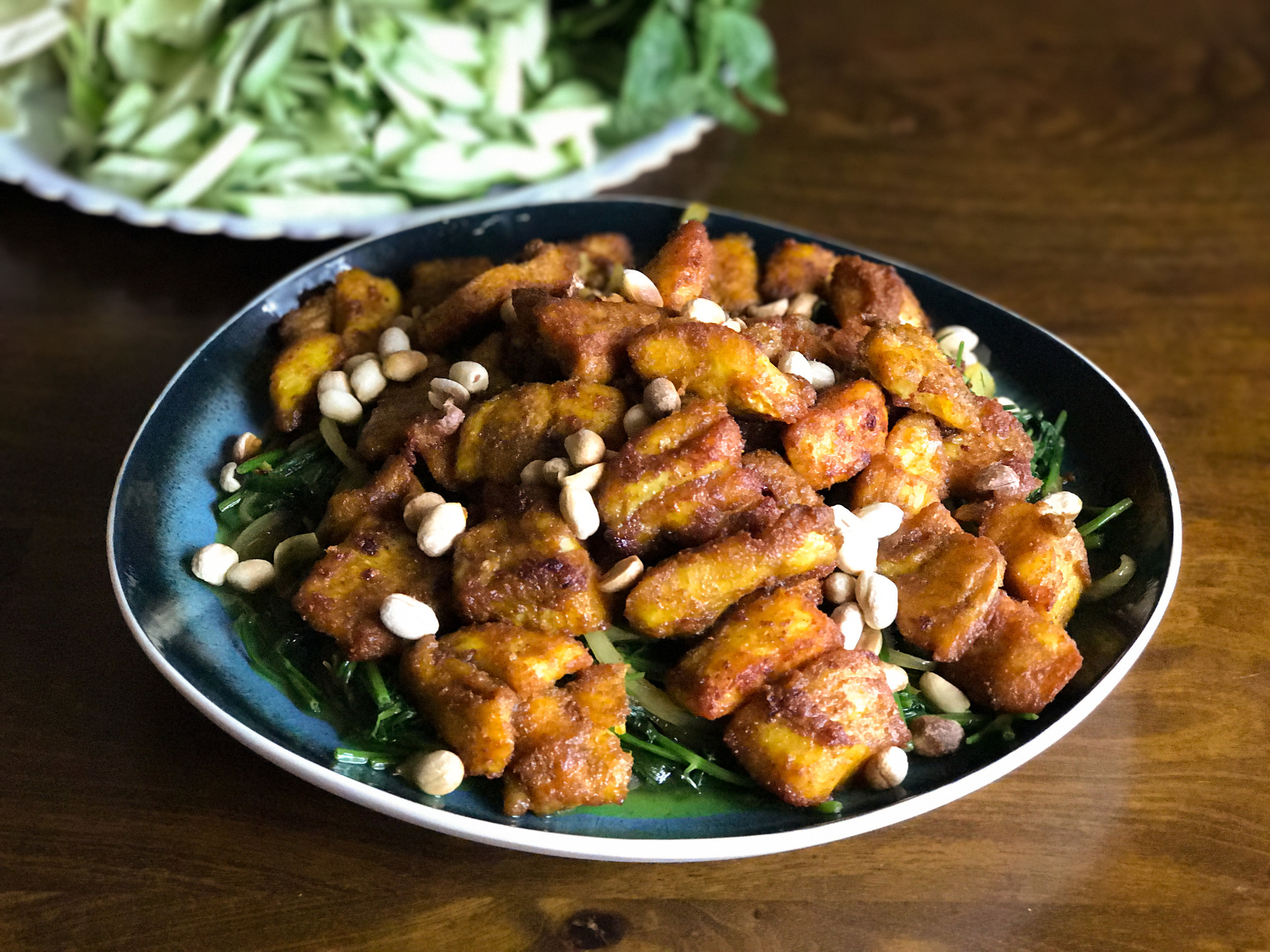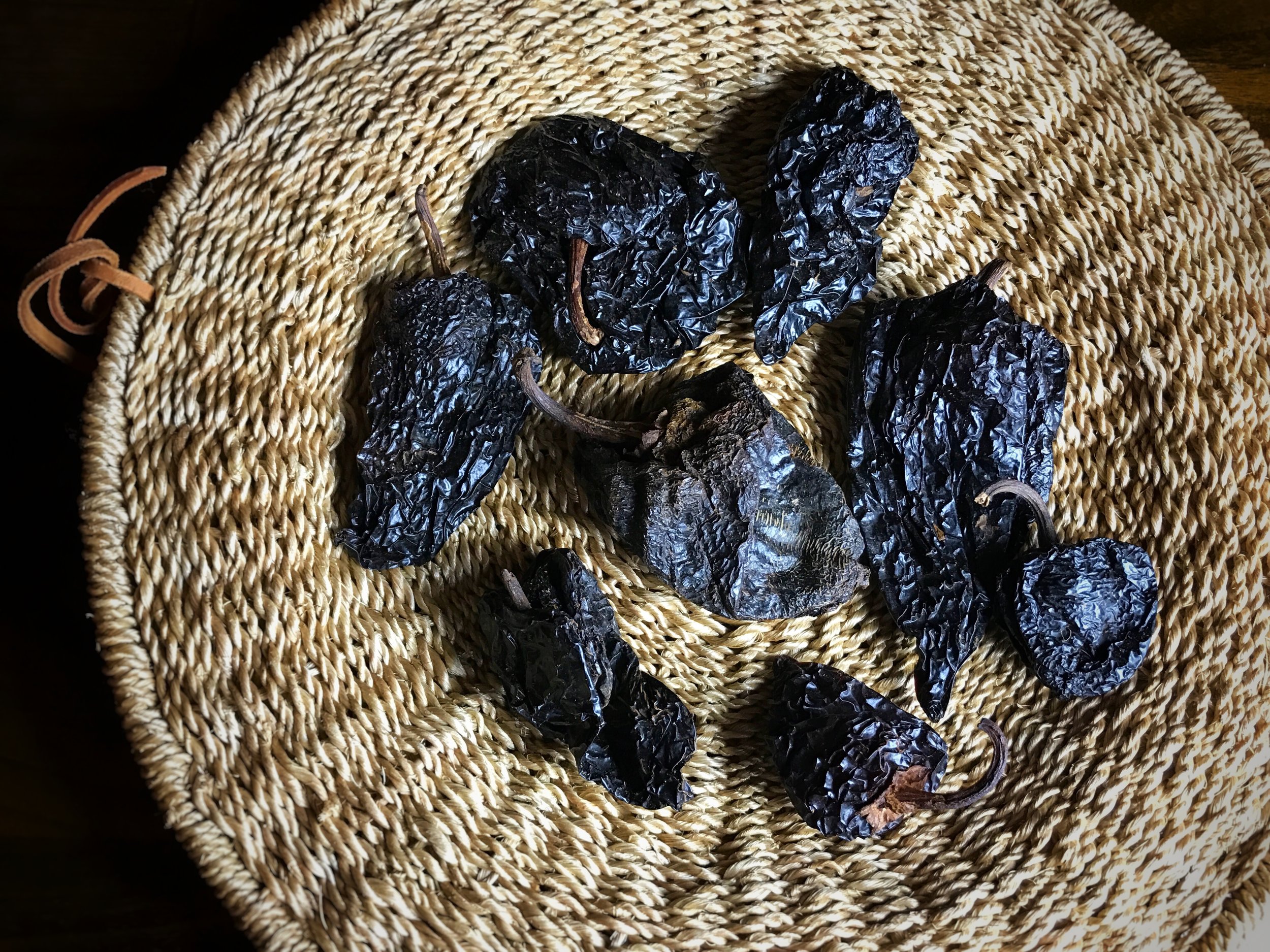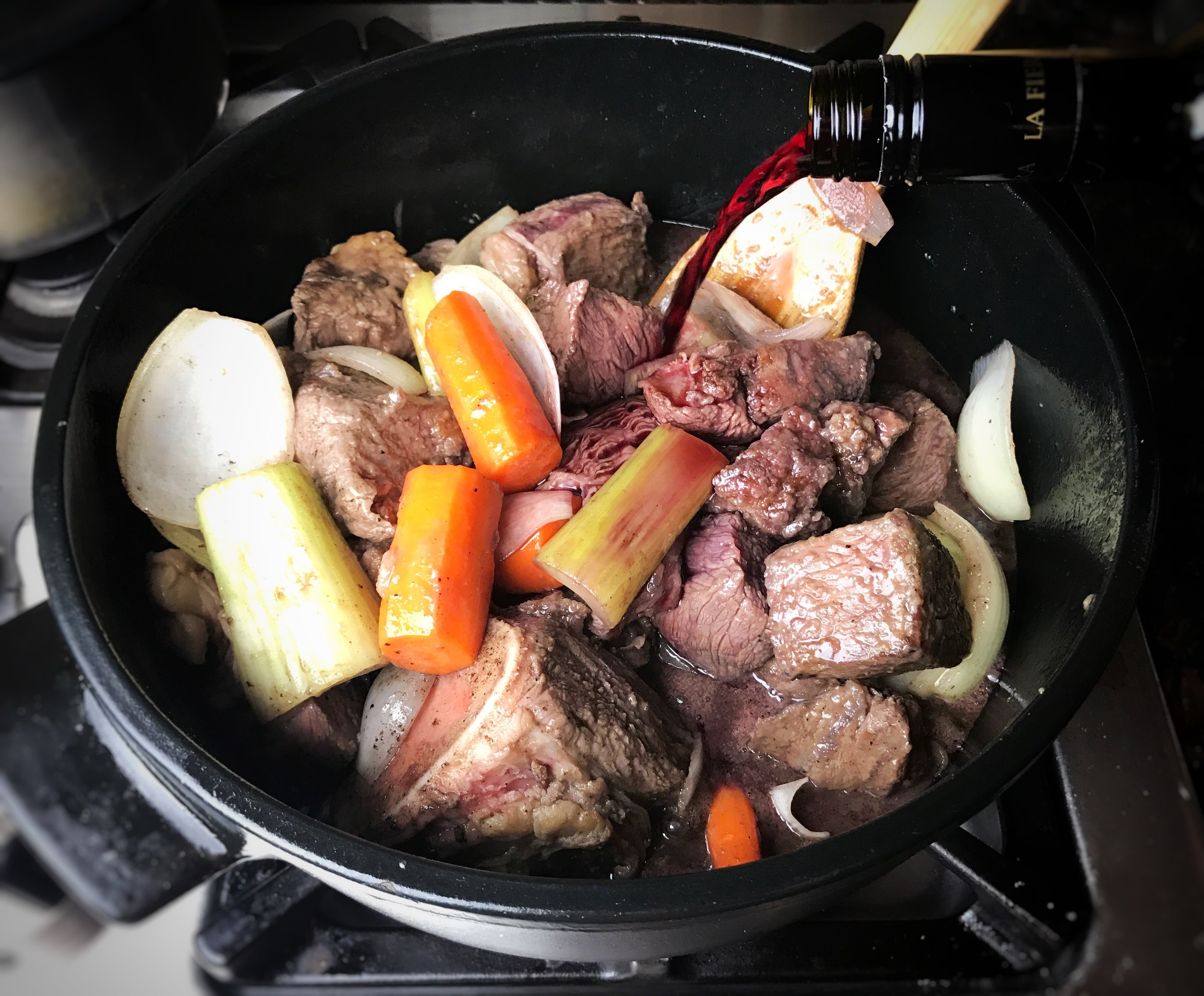One of the best parts of visiting my hometown, L.A., is dinner or lunch at my friend Michalene's. I've mentioned Michalene – or Mikie, as her family and a few close friends call her – in many posts. It was Mikie, for instance, who wondered, after a recipe for Chinese lacquered roast chicken changed my life, what would happen if I adapted it to duck. (Answer: more life-changingly delectable fowl play.)
I met Mikie in 2003, when she was Food Editor at the Los Angeles Times, but I'd long been a fan. Before arriving at the Times a couple years earlier, she'd been Dining Editor at the New York Times, producing the Dining section that quickly, under her tenure, became a must-read. I hadn't realized I wanted to work at a newspaper – in fact I thought I didn't. But the minute I met Michalene, who invited me for a drink to discuss the possibility of my coming on board as her deputy editor, and she talked so excitedly about her love for cooking, and eating out, and editing and writing and putting together a food section, I knew I had to give it a go.
Before long, we became not just co-workers, but fast friends. That meant we cooked and dined together often. It's one of the things I miss most about living in L.A.
So, dining at Mikie's. There are lots of great things about it. Hanging out with Mikie, and her partner Dan (who happens to be an amazing cook, too, and an awesome bread baker). They have an spectacular view of the ocean, over their rows of vineyards, from their house in the Malibu hills, so dinner's often on the patio. They are warm, generous, thoughtful and altogether brilliant hosts.
I always secretly hope, as I drive up Pacific Coast Highway toward their place in Corral Canyon, that Mikie will have made her fabulous marinated olives: They're just so much better than any other olives anywhere, perfumed with orange and herbs, and spiced just so – a dreamy pre-main-event nibble.
A couple weeks ago, with friends coming to a dinner with a Spanish theme, I thought, as I tried to figure out the tapas y pinxtos, hey – why don't I make Mikie's olives? I texted her, asking for the recipe, and she told me it's from Mark Bittman's How to Cook Everything. – just tweaked a little. She adds orange zest, she tole me, and fennel seed. And she uses more vinegar than Bittman does, and less olive oil. Oh, and her technique is slightly different.
In other words, Mikie has made the olives her own. Honestly, I think it's the orange zest and fennel that knock them out of the park.
How good are they? Well, I spent all day cooking to prepare for that dinner. I made bandilleros – all kinds of pickly and cured treats, prettily skwered. And some really nice tapas – piquillo peppers filled with brandade. And grilled asparagus with Serrano ham. And seafood paella. (OK, I blew the paella, if truth be told. Overcooked it terribly. Don't tell anyone.) Want to know what got the most applause? Mikie's olives.
They take all of about five minutes to put together: It's just assorted olives (I like to use Castelvetranos, Picholines, Niçoises, Cerignolas and anything else that looks great – with pits), plus a few smashed garlic cloves, bay leaves, thyme branches, red pepper flakes, fennel seeds, orange zest, olive oil and red wine vinegar. Combine it all, and let it sit on the counter all afternoon – or even just an hour. Give it a toss with a spoon every now and then. That's it.
Here's the recipe:
I will be eager to hear whether you love them as much as I do.



























































































